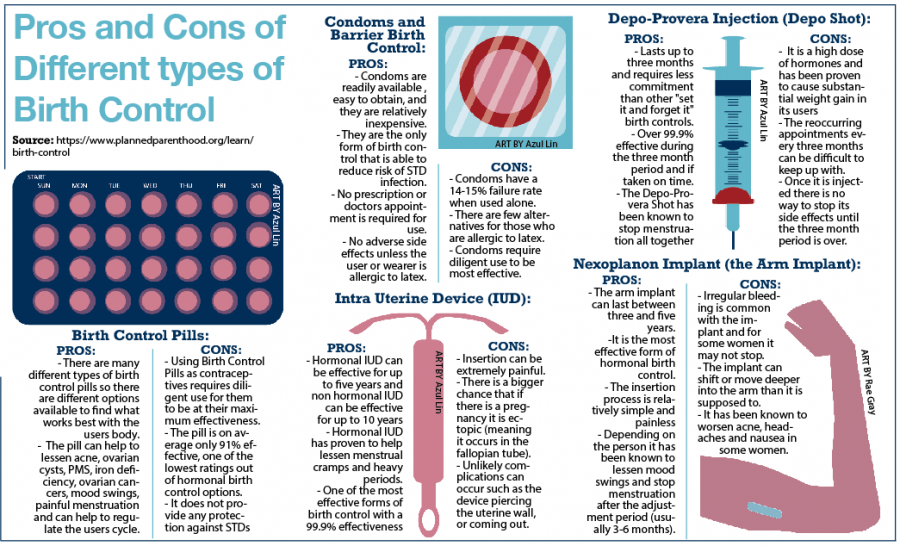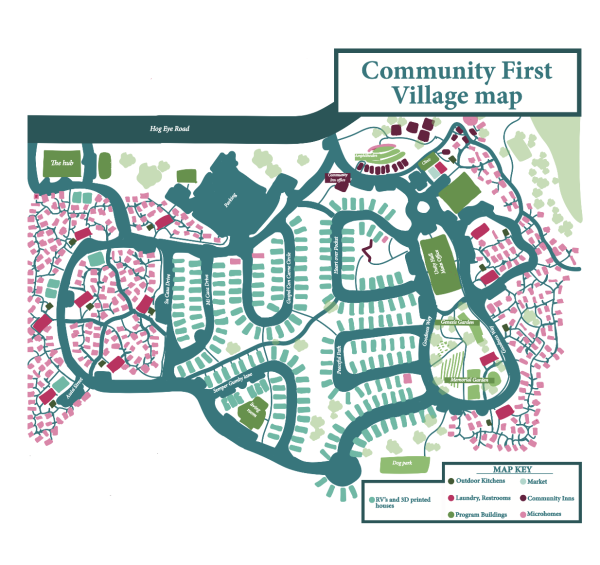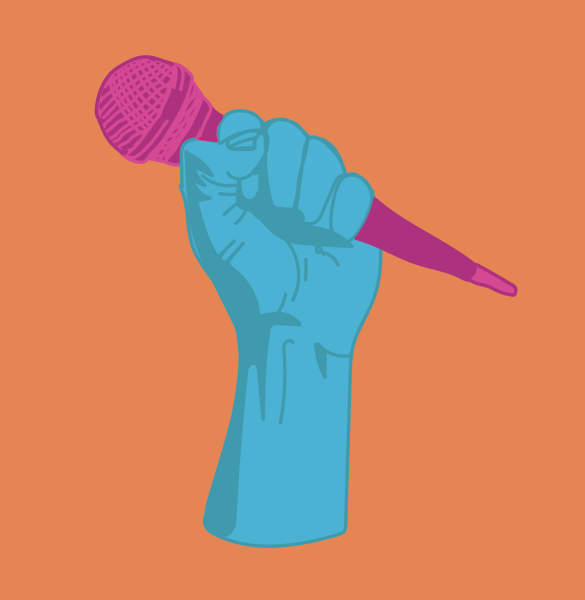The reality of reproductive health rights
Following the death of Supreme Court Justice Ruth Bater Ginsberg, the future of reproductive health rights and access to reproductive health services have been in question as the Supreme Court is left with a super majority of conservative members. Particularly of concern is a woman’s right to an abortion, as decided in the 1973 case Roe v. Wade.
Recently the conservative party has put abortion at the top of their agenda, with President Donald Trump planning to de-fund Planned Parenthood if he gets reelected because of its participation in performing the controversial procedure.
“I think with the loss of Justice Ruth Baiter Ginsberg and the nomination of Amy Coney Barrett, Roe v Wade is at risk of being overturned,” junior Tammy Johnson* said. “Even though Barret is a woman she is very conservative and does not support access to abortion or contraceptives, I think if she is sworn in it could potentially reverse what we’ve accomplished in terms of reproductive rights.”
In countries where abortion is illegal the rate of abortions per unwanted pregnancy is similar in countries where abortion is broadly legal. In fact, according to guttmacher.org, both have an abortion rate of about 40% of the total unwanted pregnancies.
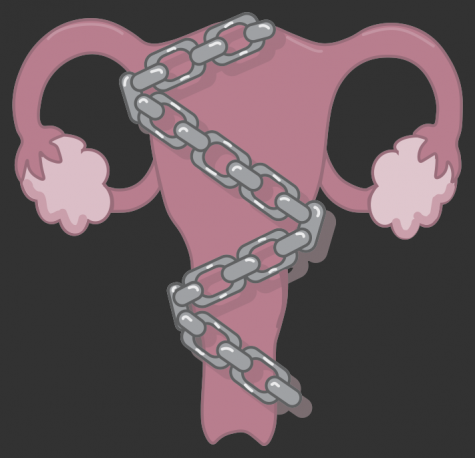
“It’s kind of like the gun debate, in the sense that if you restrict gun access people are still going to illegally acquire guns,” senior Isabella Cunningham said. “Same thing with abortions, if it is made illegal, it is still going to happen, it is just going to be really unsafe and unregulated, which is dangerous for women. Especially when there’s instances of rape, or they’re under age and they can’t care for a child mentally or financially.”
Oftentimes, women’s reproductive rights and religious freedom clash. In 2018 the Trump administration expanded the Obama-era policy of religious exemptions and passed a mandate allowing for religious or moral objection in the insurance coverage of contraceptives for female employees of religious affiliated corporations or institutions. This mandate was later brought to the Supreme Court, which upheld the ruling.
“That ruling makes women have to find another insurance or pay for birth control on their own,” Cunningham said. “There are so many women who need birth control in America and it’s how women can succeed economically and financially.”
Birth control does more for women than just preventing pregnancies and is often used for other reasons. According to plannedparenthood.org, it can be prescribed for many different ailments, such as painful abnormal periods, ovarian cysts and many other hormone related health problems.
“I actually didn’t choose to go on birth control, it was recommended to me by my doctor,” junior Ally Thomas* said. “I had medical problems, including really bad nausea and stomach aches. And my period cramps were so awful, with everything that was already going on it would make me really sick so my doctor recommended that I go on birth control to help with the pain of my periods.”
Birth control is also prescribed for a condition called Endometriosis. Endometriosis is a condition in which the tissue that normally lines the inside of the uterus grows on the outside of the uterus, and is not able to exit the body.
While this is not a curable condition some of the treatments include; laparoscopic surgery, hysterectomy, and hormonal therapy. This condition can cause extreme pain during menstruation and can lead to infertility or subfertility if left untreated.
“ I have endometriosis,” senior Emily Moore* said. “So, my uterus does not correctly shed the lining during my period, which makes it really painful for me to have periods and birth control is one of the easiest and least invasive ways to treat that. So, I went on the pill.”
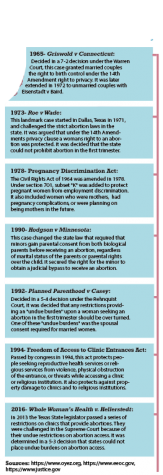
Besides serious medical conditions, birth control can also be used to regulate hormonal issues for women, and allows for a generally more regulated menstrual cycle.
“Some women need to eliminate their period all together, so there is no cramping, bleeding, or mood swings,” anatomy teacher Renee Keyes said. “Many teenagers are put on birth control for these positive side effects alone.”
For women, being on birth control means that they are able to have periods without excruciating pain that prohibits them from being able to function normally.
“I can function on my period now that I’m on birth control,” Moore said. “I don’t debate whether or not I’m going to go to school that day because I’m not in pain anymore. It also makes my periods lighter and a lot
more manageable.”
However, even with all
of the positive side effects that birth control can bring, Johnson believes that there is a stigma that comes with girls having birth control.
“I feel that the stigma around birth control affects girls because it’s almost viewed as a dirty shameful
secret to be on birth control,” Johnson said. “I remember when I filled out my physical this year and I had to tell the nurse that I had an IUD and the look she gave me feel terrible. I don’t understand why men can take the protective steps necessary to have safe sex but women can’t.”
Along with slut shaming, modesty shaming is when a person is made to feel bad about abstaining from sex. According to Thomas, there is no choice that a woman can make without being judged.
“I do believe that there is a tone of modesty shaming in our society,” Thomas said. “I personally believe that the Lord made sex for marriage, and that’s why I want to save it as a special thing between me and my husband. I also feel like I’m too young, but I understand if other girls feel ready to make that decision in their lives. There’s a lot of places where mostly men shame women because of their choice to remain abstinent. Saying that, it also can go the other way with slut shaming, unfortunately women are shamed for the choice that they decide to make either way.”
*Names have been changed to protect the identity of the anonymous sources.
Your donation will support the student journalists of James Bowie High School. Your contribution will help cover our annual website hosting costs. Any contributions made through this service are NOT tax deductible. If you would like to make a tax deductible donation OR to subscribe to our print edition, please contact us at [email protected].


